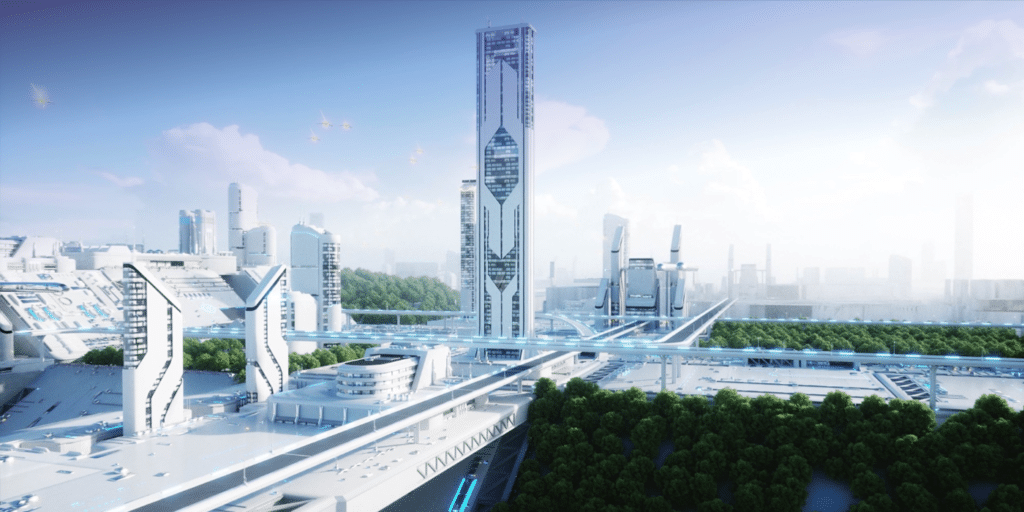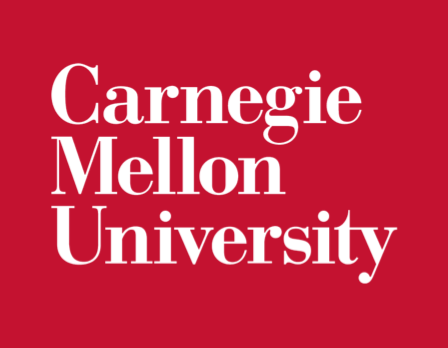Global warming. Worldwide rural-to-urban migration. Improving our health and quality of life. In today’s world, smart cities can help us address these issues. They can help us tackle what the United Nations describes as the “defining task of the 21st century” — making peace with nature — with tech solutions. That’s a mission that the Civil and Environmental Engineering (CEE) department at Carnegie Mellon University (CMU) is making massive strides in.
CMU is leading the effort to create sustainable smart cities through collaboration and research. The Building Information Modeling for Engineering, Construction, and Facility Management graduate course is pioneered by CEE Associate Professor Pingbo Tang. It lets students tour a futuristic and interconnected built environment through a pilot programme of software called Mega City 2070.

Mega City 2070. Source: CMU
“We need to think now about making designs flexible and adaptable to handle these challenges,” says Tang. “If civil engineers don’t look at what the climate, population, and energy sources will be in 50 years, what we build will become obsolete very quickly, leading to future expense and waste.”
Created by the American Society of Civil Engineers (ASCE) based on extensive research, Mega City 2070 immerses users in a realistic 3D model of a city home to 50 million people in 2070. Students delve into articles, reports, videos, and discussions regarding transportation, construction and materials, energy and utilities and many more.
That’s not all. From developing new technologies to improving transportation systems to discovering the ethical and sustainability concerns surrounding autonomous systems, CEE faculty members are at the forefront of innovation to create sustainable cities of the future.
CMU researchers have partnered with Fujitsu Limited – a leading Japanese information and communication technology company – to develop social digital twin technology (SDT) to create virtual environments. This partnership will explore the application of SDT in global communities.
Over at the Autonomous Technologies for Livability and Sustainability initiative, CEE professor Mario Bergés is shooting for the moon. He is the principal investigator bringing together various groups of people from across Engineering as well as Architecture, Computer Science, Philosophy, and Heinz College.
They have funding won from the CMU College of Engineering’s Moonshot 2020 competition to realise a bold vision. The group will partner with industry and local government to develop and test theories, methodologies, and technologies to solve wide-ranging ethical and sustainability concerns around autonomous systems.

Source: Shutterstock
Look at the lives of CEE graduates and you’ll see how they’re walking the same future-facing paths as their former professors. Navin Katta (MS ’09) is helping create a world where our cars alert us when the next traffic signal is about to turn red because the signal “spoke” to it.
As part of the team at high-tech start-up Savari, Inc., he helped develop both hardware and software for vehicles that are designed to improve road safety. Katta works on next-generation technologies, managing the company’s Smart City initiatives, working with Savari’s Cloud products, and managing mobile application development. From 2010 to 2019, he was a principal investigator and manager for research grants, totalling more than US$3.8 million.
But the impact of his work on the future of smart cities is invaluable. Having smarter vehicles could reduce the number of vehicle crashes in the US by about 80%, according to Katta.
“What we do here is more on the perception side, so helping the car perceive what is going on around it but not actuating your brakes or accelerator to react to the situation. It still relies on the driver — whether they are human or an autonomous driving computer programme,” Katta says.
It CEE’s interdisciplinary approach that helped him become a better problem-solver — a key trait to approach many issues we face today. “You can design your programme to whatever you want it to be,” says Katta.
Interested to find out more? Visit Carnegie Mellon University’s website here.
Follow Carnegie Mellon University on Facebook, Twitter, LinkedIn, Instagram, YouTube











